| Regional Issues
In 2004, the greater Cleveland area suffered a number of setbacks, but
the year was not without its successes as well. A proposal to increase
the sales tax to finance a new convention center was pulled from the March
2004 ballot before voters could weigh in on the issue. Although the business
community continues to support the development of a new center, political
leaders felt they had insufficient time to inform the public on the need
for the facility and its benefits. The city created the Convention Facilities
Authority in 2004, which has a mission to develop a new center. Downtown
is left with its dated 375,000 square foot underground Cleveland Convention
Center as well as atypical meeting environments such as the Cleveland State
University Convocation Center and Gund Arena. In the suburbs, the International
Exposition Center with over 1 million square feet of meeting space continues
to have an uncertain future. Located adjacent to the Cleveland Hopkins
International Airport, the center was slated for demolition in favor of
the airport�s expansion. However, with the reduction in air travel, it
may not be necessary to expand through the I-X Center�s property and thus
the structure may remain. Unfortunately, this converted tank plant, like
the Cleveland Convention Center, lacks up-to-date amenities sought after
by meeting planners. A new convention center to replace either or both
of these facilities continues to lack regional financial and political
support, and seems an unlikely prospect for the near future.
Despite the limitations on conventional convention space, the Cleveland
market experienced growth in the group meetings market segment. The following
table presents historical meeting activities in the Greater Cleveland area.
.
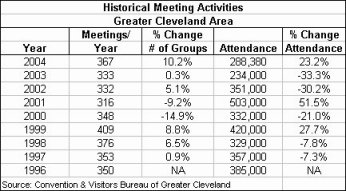 .
.
The number of meetings hosted in Cleveland jumped in 2004 to its highest
mark since 1999, increasing 10.2% over last year. Unlike the previous two
years when the number of meetings increased but attendance at those meeting
declined, 2004 saw an increase in meeting attendance for the first time
since 2001. Although the average attendance at meetings continues to lag
behind years past, it is encouraging to see the growth in attendance in
the past twelve months.
The following table lists the top five conventions planned for the Cleveland
area for 2005.
.
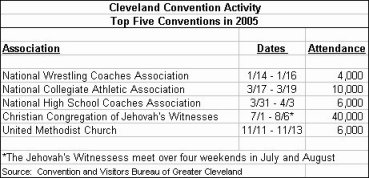 .
.
The region�s sluggish economy had an exclamation point placed on it
in 2004 when the Census Bureau ranked Cleveland the nation�s poorest big
city. In the past four years, Cuyahoga County has lost 63,900 jobs or nearly
8.1% of the total jobs in the county. Manufacturing job numbers are even
worse, with Cuyahoga County losing 21.4% of that job category during the
same period. In late 2005, Ford Motor Company will close its Lorain Assembly
Plant, a move that will cost the jobs of 1,200 workers. Not all sectors
have contracted however, as health care and financial services job categories
continue to show net positive job growth. In addition, International Steel
Group reaffirmed its expansion plans for Cleveland, following its recent
sale to Mittal Steel Co. Also, Charter Steel is investing $90 million dollars
in an expansion which will generate 140 manufacturing jobs.
Cleveland�s Mayor Jane Campbell has thrown her support behind the development
of a casino in the downtown area. The specifics of the program are yet
to be worked out and a number of obstacles will need to be overcome before
a casino can be built. Ohio voters would need to approve casino gambling
in the state before it could happen. Twice before in 1990 and 1996, voters
have rejected such proposals by almost 2-to-1. However, the mayor has proposed
a change in the state constitution to permit communities the right to decide
whether or not to permit gaming. She is aiming for getting the proposition
on the November 2005 ballot. Most lawmakers still consider the proposal
a long shot.
Regional Attractions
Regional attractions have on balance been a better performer in the
Cleveland market than that of the other sectors, but they too have had
challenges. In 2004, the Cleveland Browns football team played before sell-out
crowds each home game despite its poor performance on the field, the resignation
of its coach in mid-season and general disorganization in the team�s front
office. Competitive play by the Cleveland Indians baseball team through
most of the 2004 season was rewarded by an increase in attendance for the
first time in three years. The Cleveland Cavaliers basketball team, having
played to near empty arenas in past years, now performs before sell-out
crowds, thanks to the performance of its all-star LeBron James.
Six Flags Worlds of Adventure, the largest theme park in the Cleveland
MSA, was sold in April 2004 to Cedar Fair the parent company of Cedar Point
and renamed Geauga Lake. The 2004 season�s attendance fell to a little
over 700,000, a 74% decrease from 2001�s attendance and lost $1.8 million
in the prime July to September period. In an attempt to lure people back
to the park, adult admission price will be reduced by $10 to $24.95 in
2005. In addition, park officials announced plans to build a 20-acre waterpark
named Wildwater Kingdom, located on the former Sea World side of the park.
Construction on the first phase of the waterpark is scheduled to open by
the 2005 season and will include a 60-foot tall tornado slide, activity
pool, and a children�s area with a multi-story interactive play structure.
The second phase will include a 38,000 square foot wave pool, an adult
pool with whirlpool spas, a swim-up bar and a number of additional water
slides. The estimated cost of the expansion is $26 million.
Cedar Point, the region�s most popular amusement park, also experienced
a decline in attendance, dropping to 3.2 million in 2004 from 3.3 million
in 2003. Much of the attendance decline was attributed to the lack of new
attractions and weather issues. In 2005, the park is investing $10 million
on park upgrades and the introduction of a new thrill ride maXair. The
swinging pendulum movement of the ride will take the rider 140 feet high
and create a feeling similar to weightlessness.
For the third consecutive year Cleveland hosted the Gravity Games. In
2003, the games held their first live broadcast from Cleveland featuring
the freestyle motocross competition. The event was the highest-rated, action
sports television event in the United States. In 2004, the games doubled
the broadcast coverage with more than 20 hours of event coverage. In 2004,
Cleveland hosted the International Children�s Games and Festival, the first
time the games have ever been held in the United States. About 2,200 young
athletes from more than 50 countries participated in a variety of events.
Cleveland also hosted the Vice Presidential Debate in October at Case Western
Reserve University which was one of the most watched debates of the political
season. The events combined to present Cleveland on a world stage which
provides long-term benefits including international business opportunities.
---
 David
J. Sangree, MAI, CPA, ISHC is President of Hotel & Leisure Advisors,
a national hospitality consulting firm specializing in appraisals, feasibility
studies, and impact analysis for hotels, resorts, waterparks, and other
leisure real estate. When this article was published, David Sangree was
Director of Hospitality Consulting with US Realty Consultants and a Principal
in the Cleveland office. David
J. Sangree, MAI, CPA, ISHC is President of Hotel & Leisure Advisors,
a national hospitality consulting firm specializing in appraisals, feasibility
studies, and impact analysis for hotels, resorts, waterparks, and other
leisure real estate. When this article was published, David Sangree was
Director of Hospitality Consulting with US Realty Consultants and a Principal
in the Cleveland office. |

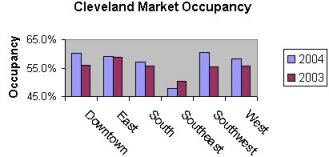
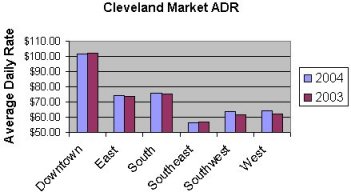
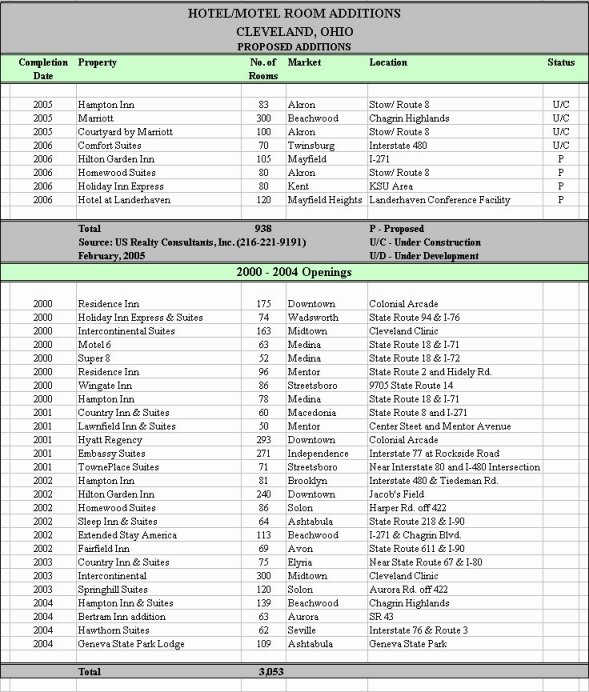


 David
J. Sangree, MAI, CPA, ISHC is President of Hotel & Leisure Advisors,
a national hospitality consulting firm specializing in appraisals, feasibility
studies, and impact analysis for hotels, resorts, waterparks, and other
leisure real estate. When this article was published, David Sangree was
Director of Hospitality Consulting with US Realty Consultants and a Principal
in the Cleveland office.
David
J. Sangree, MAI, CPA, ISHC is President of Hotel & Leisure Advisors,
a national hospitality consulting firm specializing in appraisals, feasibility
studies, and impact analysis for hotels, resorts, waterparks, and other
leisure real estate. When this article was published, David Sangree was
Director of Hospitality Consulting with US Realty Consultants and a Principal
in the Cleveland office.